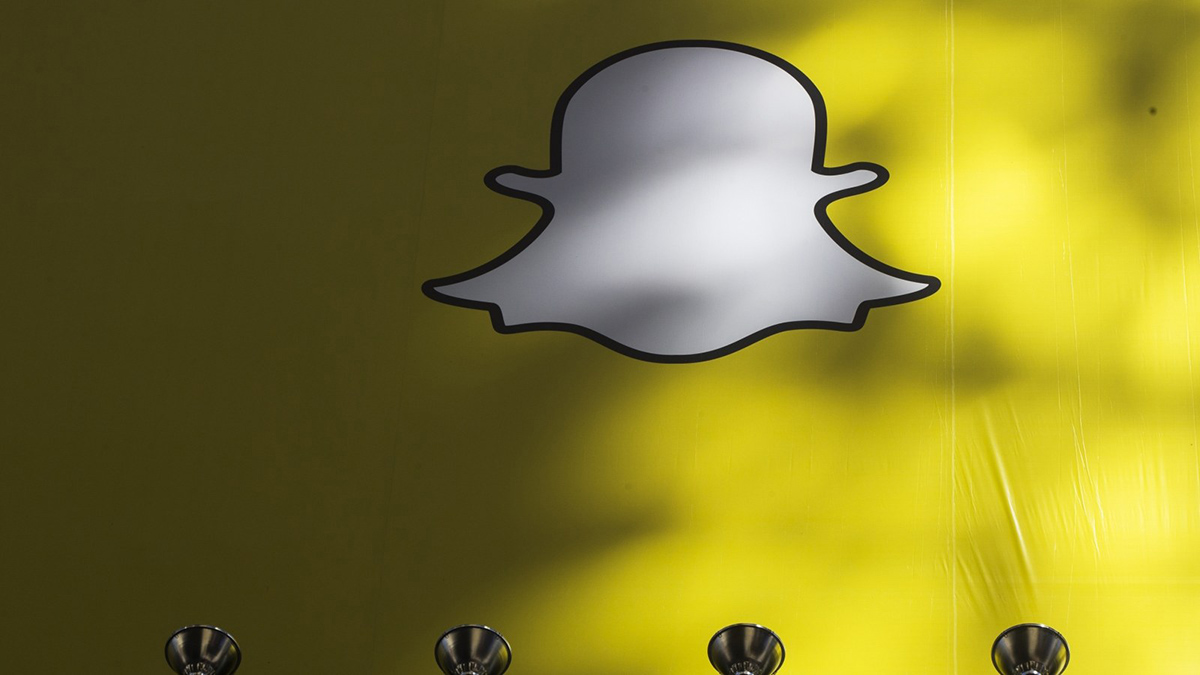

Finance
Why Snapchat Turned Down Buyouts
Published: December 26, 2023
Find out why Snapchat, a popular social media platform, decided to reject lucrative buyout offers in the finance industry and choose to remain independent.
(Many of the links in this article redirect to a specific reviewed product. Your purchase of these products through affiliate links helps to generate commission for LiveWell, at no extra cost. Learn more)
Table of Contents
Introduction
With its innovative features and skyrocketing popularity, Snapchat has become a household name in the realm of social media. This multimedia messaging app has captured the attention of millions of users worldwide, allowing them to share photos, videos, and messages that disappear after a short period of time. Since its launch in 2011, Snapchat has revolutionized the way people communicate and connect with each other.
However, despite its immense success, Snapchat has faced its fair share of challenges. One of the most notable decisions that caught the attention of the tech industry was the company’s rejection of several lucrative buyout offers from major players in the technology and social media space. This move by Snapchat’s founders left many industry experts pondering the rationale behind their decision.
In this article, we will delve into the intriguing story behind why Snapchat turned down these buyout offers and explore the factors that influenced their decision. Additionally, we will look into the future plans of Snap Inc., the parent company of Snapchat, and examine how they are positioning themselves to compete in the ever-evolving social media landscape.
Brief Overview of Snapchat
Snapchat, founded by Evan Spiegel, Bobby Murphy, and Reggie Brown, burst onto the scene in 2011 and quickly gained popularity among young users looking for a fresh and interactive way to communicate. What sets Snapchat apart from other social media platforms is its ephemeral nature – messages and content disappear after being viewed, giving users a sense of privacy and spontaneity.
The main feature of Snapchat is the ability to send “snaps,” which can be photos, videos, or messages, to friends and followers. These snaps can be personalized with creative filters, stickers, and captions, adding a fun and playful element to the communication process. Users can also share stories, a compilation of snaps that can be viewed by their friends for 24 hours before disappearing.
The app’s user base grew rapidly, especially among younger demographics, becoming a cultural phenomenon. With its user-friendly interface and constantly evolving features, Snapchat has stayed at the forefront of social media innovation. The platform has introduced augmented reality lenses, interactive games, and even a Discover section for publishers to share content with users.
Over the years, Snapchat has expanded beyond personal messaging and embraced the role of a content distribution platform. This has resulted in partnerships with major brands and influencers, allowing them to reach Snapchat’s vast audience through sponsored filters, ads, and branded content. This monetization strategy has been crucial in sustaining the app’s growth and generating revenue.
Despite facing stiff competition from platforms like Instagram and TikTok, Snapchat has continued to thrive, maintaining a loyal user base and introducing new features to stay relevant. The app has evolved into much more than just a messaging platform, positioning itself as a unique multimedia experience that captures the essence of the moment.
The Buyout Offers
As Snapchat’s popularity skyrocketed, the tech industry took notice, leading to a series of buyout offers from major players in the technology and social media space. These offers were tempting, as they presented significant financial opportunities for Snapchat’s founders and investors. However, Evan Spiegel and his team made the surprising decision to reject each and every one of them.
One of the most notable buyout offers came from Facebook in 2013. Mark Zuckerberg, the CEO of Facebook, offered a staggering $3 billion to acquire Snapchat. This offer turned heads and raised eyebrows, as Snapchat was only two years old at the time. Many saw it as an incredibly generous offer for a relatively young and unproven app.
Undeterred by Facebook’s offer, Snapchat received additional buyout offers from the likes of Google and Tencent. However, despite the excitement and potential benefits that these offers presented, Snapchat’s founder Evan Spiegel remained steadfast in his decision to decline them.
So, why did Snapchat turn down these lucrative buyout offers? The answer lies in the vision and ambition of its founders. Evan Spiegel and his team saw Snapchat as a platform with immense potential for growth and evolution. They believed that accepting a buyout offer at that stage would limit their ability to shape the future of the app and realize their long-term goals.
Furthermore, Snapchat’s founders recognized the unique characteristics that set their app apart from the competition. The ephemeral nature of Snapchat’s messages and content, combined with its emphasis on real-time communication, appealed to younger users in particular. The ability to connect and express themselves freely without the fear of permanence was at the core of Snapchat’s appeal.
By rejecting the buyout offers, Snapchat’s founders made a bold statement about their belief in the long-term viability and potential of their platform. They were determined to remain independent and maintain full control over the direction and innovation of the app.
This decision was met with both admiration and skepticism from industry experts. While some applauded Snapchat’s founders for their courage and conviction, others questioned whether they had missed out on a golden opportunity. Only time would tell if their decision would prove to be the right one.
Factors Influencing Snapchat’s Decision
The decision to turn down lucrative buyout offers is not one that is made lightly. For Snapchat, several key factors played a significant role in influencing their decision to reject these offers and remain independent.
First and foremost, Snapchat’s founders believed in the immense potential of their platform. They foresaw the app becoming more than just a messaging tool, but rather a multimedia experience that could revolutionize the way people connect and share content. By rejecting the buyout offers, the founders were able to maintain control over the direction and innovation of the app, allowing them to fully realize their vision.
Another crucial factor was the unique nature of Snapchat’s user base. The app’s appeal primarily lies with younger demographics who appreciate the ephemeral nature of the content. By rejecting the buyout offers, Snapchat’s founders preserved the authenticity and integrity of the platform, ensuring that it remained a space for genuine and spontaneous connections.
Financial considerations also played a role in Snapchat’s decision. The buyout offers, while undoubtedly lucrative, were not seen as a sufficient valuation of their potential worth. Snapchat’s founders believed that by continuing to grow the platform independently, they would be able to increase its value and eventually command a higher price if they decided to pursue acquisition or go public.
The desire for creative freedom and innovation was another significant factor. By staying independent, Snapchat’s founders were able to experiment with new features and functionalities without being restricted or influenced by a larger parent company. This freedom allowed them to push the boundaries of what was possible in the realm of social media.
Moreover, the founders of Snapchat had a long-term vision for the company. They recognized that social media is a constantly evolving landscape and wanted to ensure that Snapchat remained agile and adaptable to market changes. By rejecting the buyout offers, they were able to maintain control of the company’s destiny and make strategic decisions that aligned with their long-term goals.
Lastly, there may have been an element of pride and belief in their ability to succeed independently. By turning down the buyout offers, Snapchat’s founders demonstrated their confidence in their own capabilities and their commitment to building a successful and sustainable company from the ground up.
Overall, a combination of factors, including the belief in their platform’s potential, the unique user base, financial considerations, creative freedom, long-term vision, and pride influenced Snapchat’s decision to reject the buyout offers and carve out its own path in the ever-competitive social media landscape.
Snap Inc.’s Future Plans
Despite turning down several buyout offers, Snapchat’s parent company, Snap Inc., has continued to chart its own course and pursue its ambitious future plans. The company’s vision extends far beyond being just a messaging app, as it aims to evolve into a multimedia platform that encompasses various forms of entertainment and communication.
One of the key areas of focus for Snap Inc. is augmented reality (AR). Snapchat was one of the pioneers in bringing AR technology to the mainstream through its popular lenses feature. Snap Inc. plans to further expand and innovate in this realm, capitalizing on the growing interest in AR experiences that blur the line between the digital and physical worlds.
Another pillar of Snap Inc.’s future plans is content creation and distribution. The company has been investing heavily in developing original programming, partnering with media companies and influencers to produce exclusive content for its Discover platform. By creating compelling and engaging content, Snap Inc. aims to increase user engagement and attract a wider audience to its platform.
Furthermore, Snap Inc. recognizes the importance of monetization for the sustainability and growth of its platform. The company has been actively exploring various revenue streams, including sponsored lenses, advertising, and e-commerce partnerships. Snap Inc. aims to strike a balance between providing a seamless user experience and generating revenue to support its ambitious plans.
Additionally, Snap Inc. continues to prioritize user privacy and safety. In a time where data security and privacy concerns are at the forefront, the company has implemented measures to safeguard user information and prevent the misuse of data. This focus on privacy is crucial for maintaining user trust and loyalty in an increasingly digital and interconnected world.
Snap Inc. also has its sights set on international expansion. While the app has already gained significant traction globally, particularly in North America and Europe, the company recognizes the untapped potential in emerging markets. Snap Inc. aims to expand its user base and further penetrate these markets through strategic partnerships and localized content.
Lastly, Snap Inc. understands the power of innovation and staying at the cutting edge of technology. The company continues to invest in research and development to drive technological advancements within the app. This includes developments in areas such as machine learning, artificial intelligence, and camera technology, enhancing the overall user experience and pushing the boundaries of what is possible on the platform.
With its clear roadmap and focus on innovation, content creation, monetization, user privacy, international expansion, and technological advancement, Snap Inc. is poised to shape the future of social media and solidify its position as a major player in the industry.
Conclusion
The story of Snapchat’s rejection of buyout offers is a testament to the vision, ambition, and conviction of its founders. Despite the temptation of significant financial gains, Evan Spiegel and his team believed in the potential of Snapchat as a unique and innovative platform.
By rejecting the buyout offers, Snapchat’s founders set out on a daring path to shape the future of the app on their own terms. They recognized the distinct features that set Snapchat apart and aimed to preserve its authenticity and appeal to younger users.
The factors influencing Snapchat’s decision were multi-faceted. The founders’ belief in the platform’s potential, their desire for creative freedom, and long-term vision all played a role in their choice to remain independent. Additionally, financial considerations and a commitment to maintaining control of the company’s destiny were crucial factors.
Looking ahead, Snap Inc., the parent company of Snapchat, has ambitious plans for the future. Augmented reality, content creation, monetization, user privacy, international expansion, and technological advancement are all key areas of focus. By continually innovating and evolving, Snap Inc. aims to solidify its position as a major player in the social media landscape.
In conclusion, the decision to reject buyout offers was a bold and calculated move by Snapchat’s founders. It signaled their unwavering belief in the app’s potential to revolutionize communication and entertainment. As Snapchat continues to grow and adapt, we can expect to see exciting developments and new opportunities arise for both the company and its users.














